One of nature’s most peculiar yet fascinating sights is that of birds balancing on a single leg while sleeping. This remarkable behavior, observed across various avian species worldwide, serves multiple purposes beyond just appearing quirky to human observers. From conserving body heat to reducing muscle fatigue, standing on one leg represents an evolutionary adaptation that has helped these birds thrive in their respective environments. In this article, we’ll explore six notable bird species known for their one-legged sleeping habits, examining not just this behavior but also the science behind it and what makes each of these birds unique in their approach to rest.
The Science Behind One-Legged Sleeping
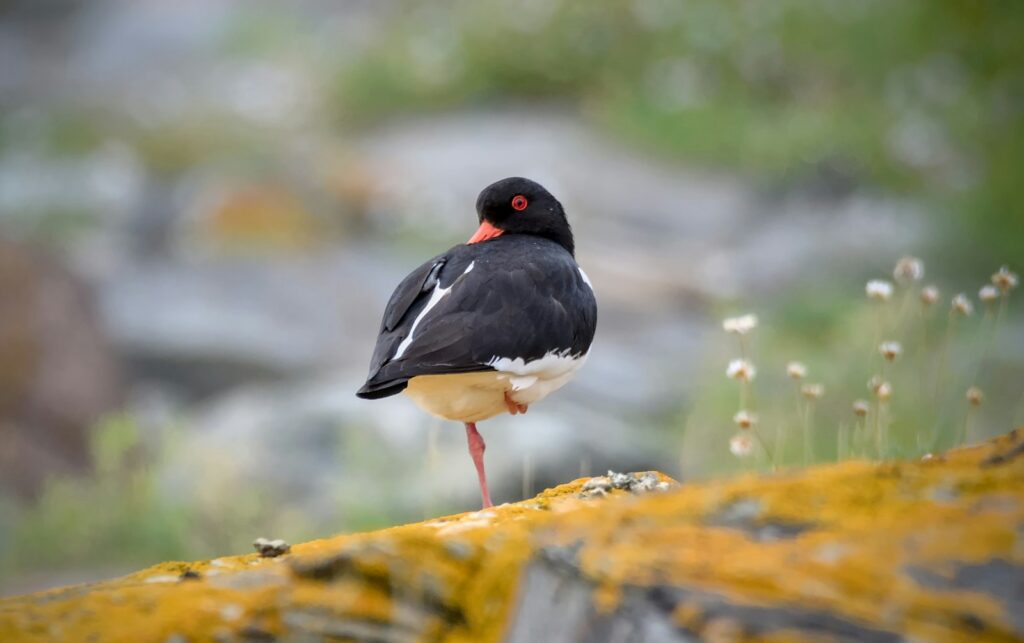
Birds that sleep on one leg aren’t simply showing off their balance skills—this behavior serves critical biological functions. The primary reason involves thermoregulation: by tucking one leg close to their body, birds reduce heat loss through their unfeathered limbs, which contain exposed blood vessels. Research has demonstrated that birds lose significant body heat through their legs, so minimizing this exposure helps maintain optimal body temperature, especially in cold environments. Additionally, studies suggest that standing on one leg may actually require less muscular effort than using both legs, thanks to a specialized locking mechanism in their joints called the “stay apparatus.” This anatomical feature allows birds to maintain their position without active muscle contraction, making one-legged standing an energy-efficient resting position. Some scientists also theorize this posture helps reduce contact with potentially cold or wet surfaces, further protecting the bird from unnecessary heat loss.
Flamingos: The Iconic One-Legged Sleepers
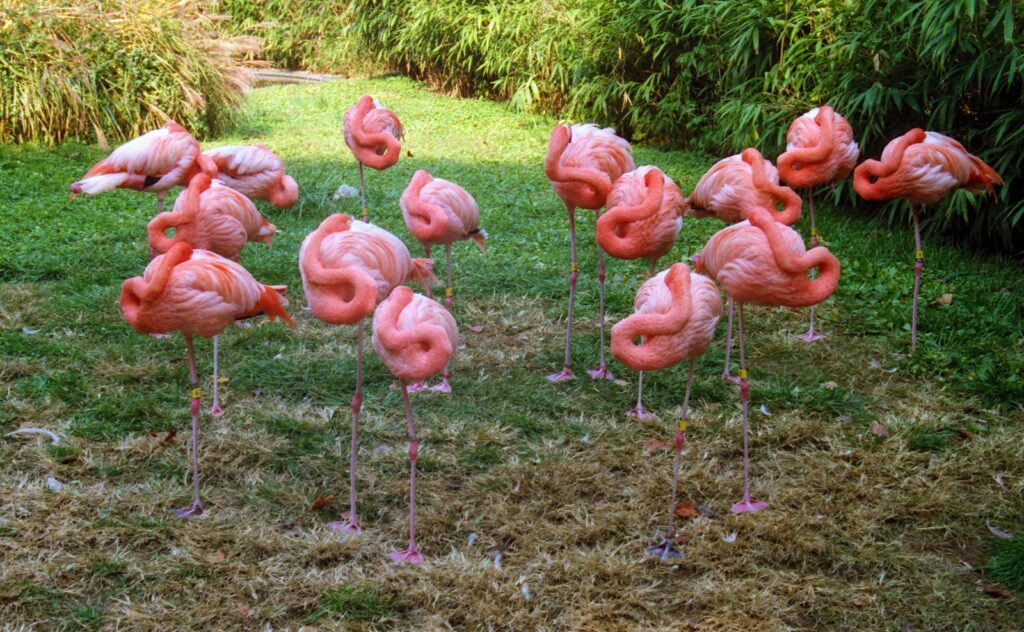
Flamingos have become virtually synonymous with one-legged standing, often depicted in this pose in everything from lawn ornaments to wildlife photography. These distinctive pink birds can maintain this position for remarkably long periods, sometimes hours, without showing signs of fatigue or imbalance. Their specialized anatomy makes one-legged standing particularly effective—flamingos have exceptionally thin legs with minimal tissue, meaning they would lose substantial body heat if both legs remained exposed to air or water. Research from Georgia Tech has revealed that flamingos actually expend less energy standing on one leg than on two, contradicting what humans might intuitively assume about balance. When sleeping, flamingos tuck their heads under a wing while standing on a single leg, creating a silhouette that has become one of nature’s most recognizable profiles. Their remarkable stability comes from a natural gravity-based locking mechanism in their legs that requires no muscular effort to maintain.
Great Blue Herons: Masters of Stillness
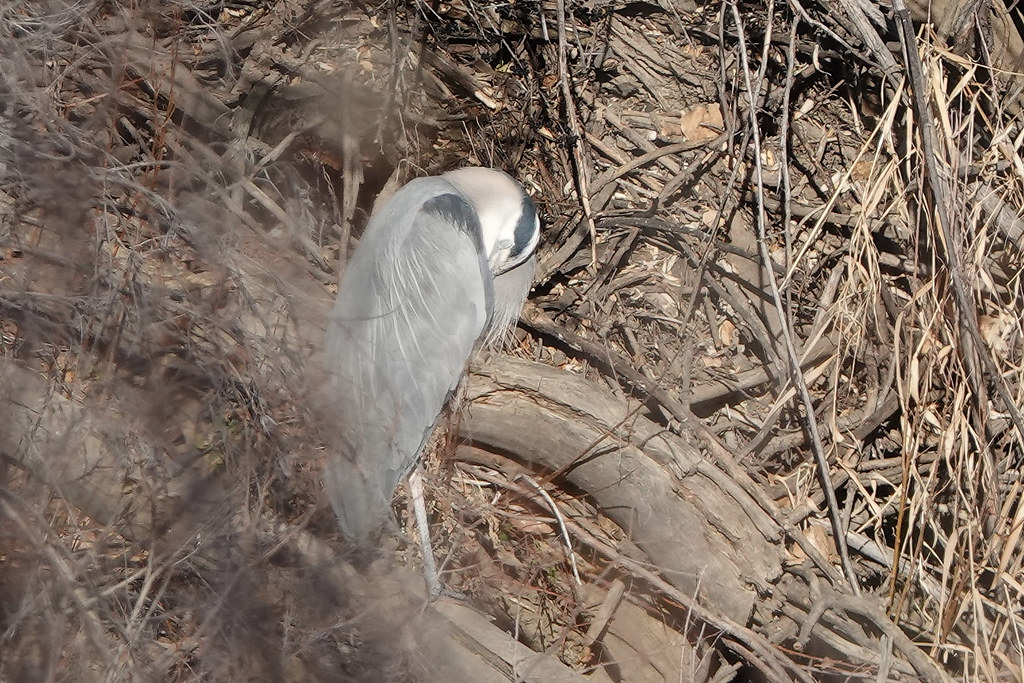
Great Blue Herons exemplify patience and stillness, frequently adopting the one-legged stance both while hunting and during rest periods. Standing at up to 4.5 feet tall with wingspans reaching 6.6 feet, these majestic birds demonstrate remarkable balance when sleeping on a single spindly leg, often in shallow water or on tree branches. Their leg-tucking behavior is particularly important since they frequently hunt in cold water, making heat conservation a crucial survival strategy. When in their signature one-legged sleeping position, Great Blue Herons often retract their long necks into an S-shape and may partially close their eyes while remaining alert to potential threats or hunting opportunities. These birds have perfected the art of motionlessness to such a degree that they can stand on one leg for hours, appearing almost statue-like while conserving energy and maintaining optimal body temperature. Their impressive stability is enhanced by specialized tendons and joints that lock into place, requiring minimal muscular effort to maintain the position.
Storks: The Long-Distance Balancers
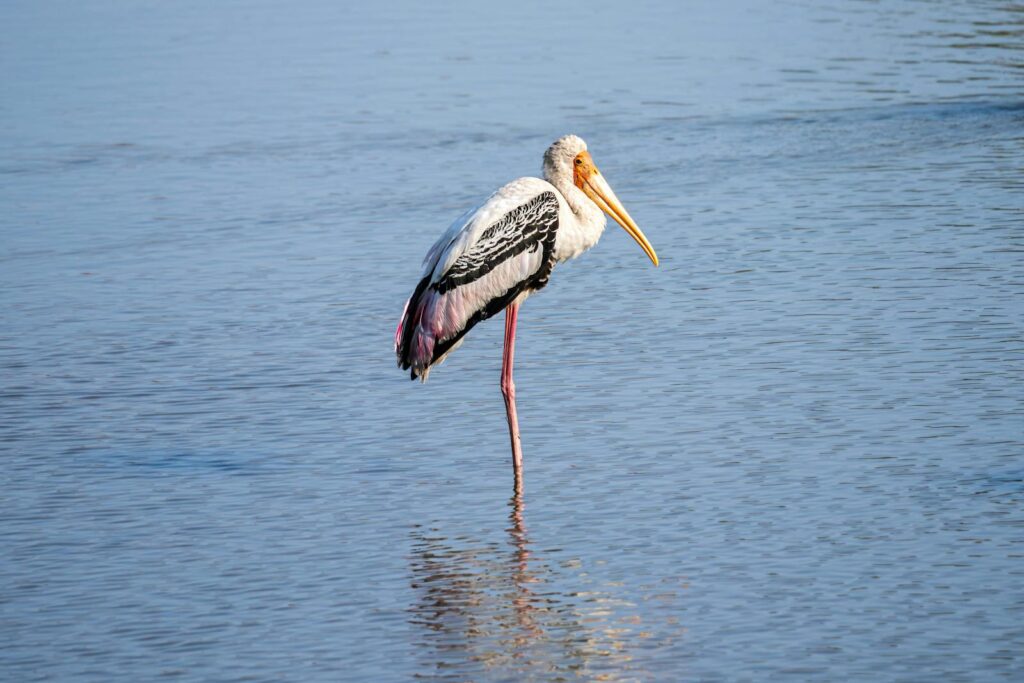
Storks, particularly the White Stork and Marabou Stork, are well-known for their one-legged sleeping habits, which they employ throughout their wide-ranging habitats across Europe, Asia, and Africa. These large birds have exceptionally long legs proportional to their body size, making heat conservation through leg-tucking particularly valuable. Storks will often sleep standing on one leg in their nests, which are typically constructed on high platforms like rooftops, trees, or cliffs, adding an extra challenge to their balancing act. During migration seasons, when storks must conserve as much energy as possible for their long journeys, the energy-efficient one-legged stance becomes even more critical to their survival strategy. Their specialized ankle joints lock into place without requiring active muscle engagement, allowing them to maintain balance even while sleeping deeply. Some stork species, like the Marabou Stork, have been observed standing on one leg even in warm weather, suggesting the behavior may serve additional purposes beyond thermal regulation, such as muscle rest alternation.
Sandhill Cranes: Communal One-Legged Sleepers
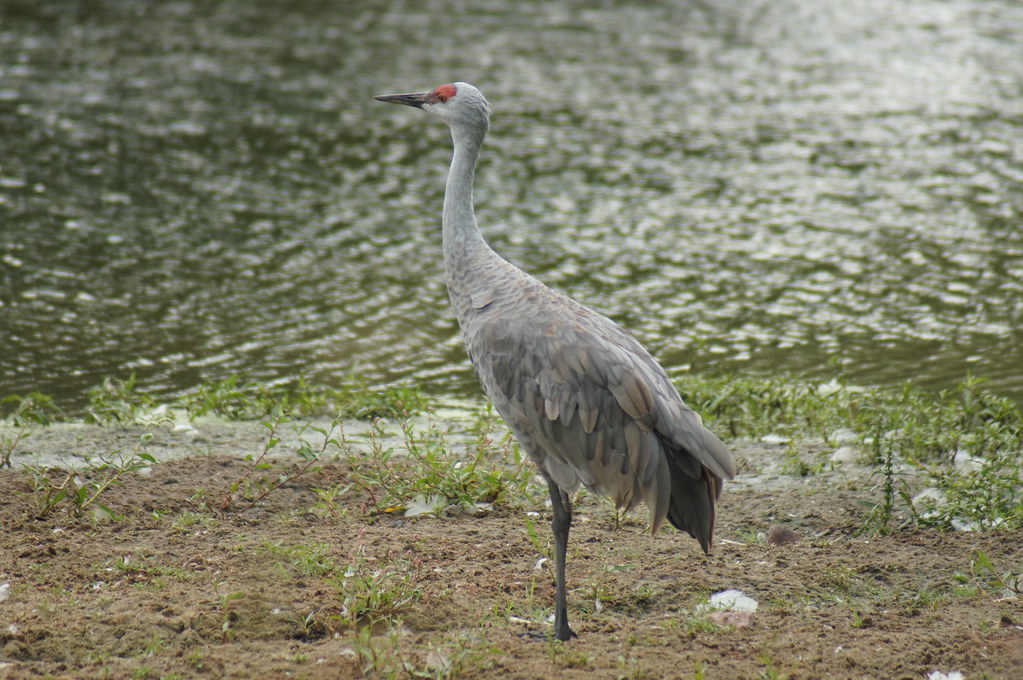
Sandhill Cranes present a particularly interesting case of one-legged sleeping as they often perform this behavior in large communal groups. These tall, elegant birds with distinctive red crowns gather in massive flocks during migration and winter months, creating spectacular scenes where hundreds of birds might be standing on one leg simultaneously. When adopting their sleeping position, Sandhill Cranes typically pull one leg close to their body, tuck their bill into their shoulder feathers, and often position themselves facing different directions within their group—a strategy that improves collective vigilance against predators. Research has documented that these cranes alternate which leg they stand on, potentially to prevent muscle fatigue and to evenly distribute their weight over time. During their famous staging periods at places like Nebraska’s Platte River, observers can witness fields filled with thousands of one-legged sleeping cranes, creating one of North America’s most impressive wildlife spectacles. The synchronization of their resting patterns demonstrates the social aspects of this behavior beyond just the physiological benefits to individual birds.
Spoonbills: Pink Balancing Artists
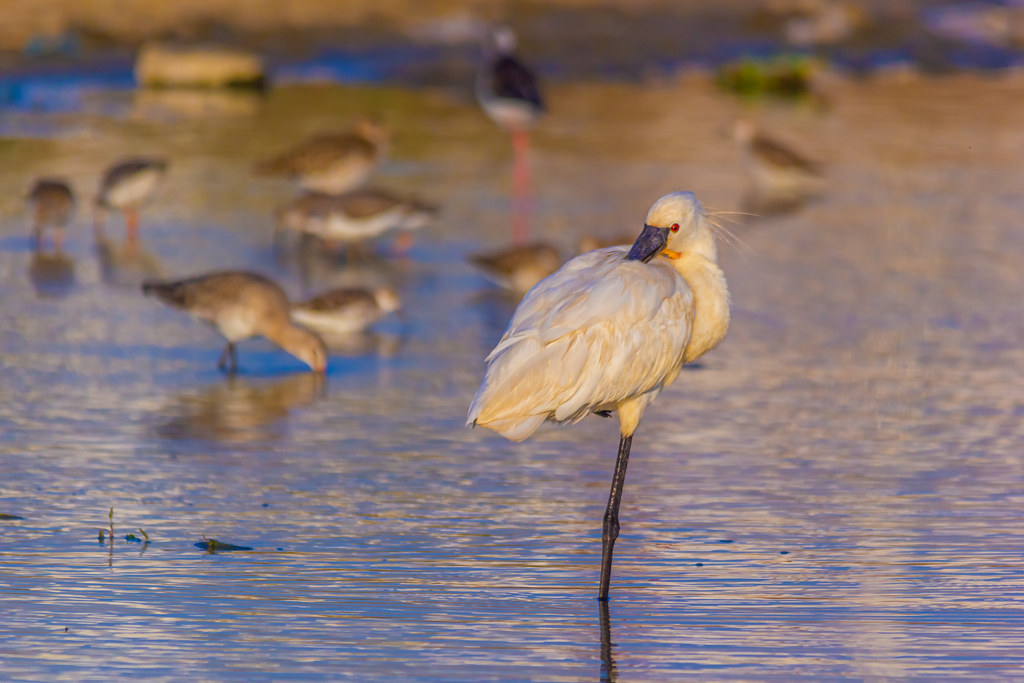
Spoonbills, with their distinctive spatulate bills and often pink plumage, are among the most visually striking birds that regularly sleep on one leg. These wading birds, found across several continents, typically feed in shallow waters where their specialized bills sweep from side to side to capture small aquatic prey. When resting, Roseate Spoonbills and their relatives frequently stand on a single leg in water or along shorelines, tucking the other leg tightly against their body to reduce heat loss through their thin, unfeathered limbs. Their pink coloration, derived from their diet of crustaceans containing carotenoid pigments, creates a remarkable contrast against blue waters when they assume their one-legged sleeping posture. Spoonbills are highly social birds that often roost in colonies, sometimes creating impressive gatherings of one-legged sleepers in wetland habitats. Their adaptation to balancing on a single leg is particularly important given their preference for feeding and resting in water, where heat loss occurs 25 times faster than in air.
Emperor Penguins: Cold-Weather Specialists
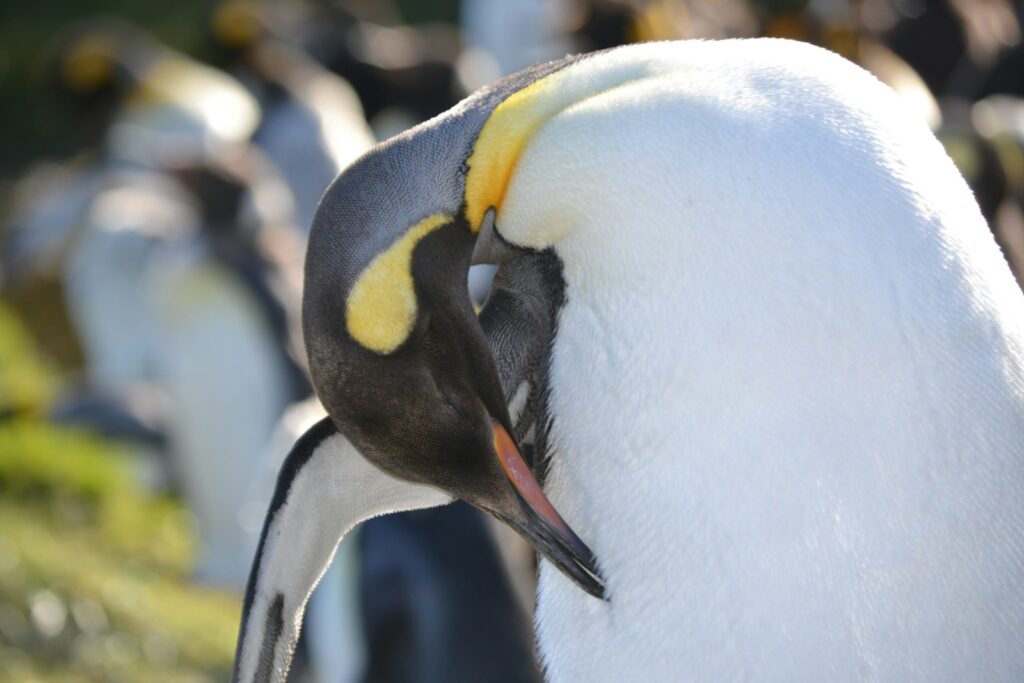
Emperor Penguins represent perhaps the most extreme example of birds using one-legged standing to combat environmental challenges. Living in Antarctica, these birds face the harshest cold conditions of any avian species, with temperatures dropping below -40°F and powerful winds creating even more severe wind chill factors. Although penguins don’t sleep standing on one leg as frequently as wading birds, they have been documented adopting this posture during rest periods, particularly when standing on ice. By lifting one foot off the frozen ground and tucking it into their dense feathers, Emperor Penguins significantly reduce contact with the ice surface that would otherwise rapidly draw heat from their bodies. These remarkable birds combine this behavior with other specialized cold-weather adaptations, including huddling in large groups to share body heat and rotating positions so all colony members take turns being exposed to the harshest conditions. Their ability to maintain balance on one leg despite their stocky build demonstrates the importance of this adaptation across diverse avian body types.
The Biomechanics of One-Legged Standing
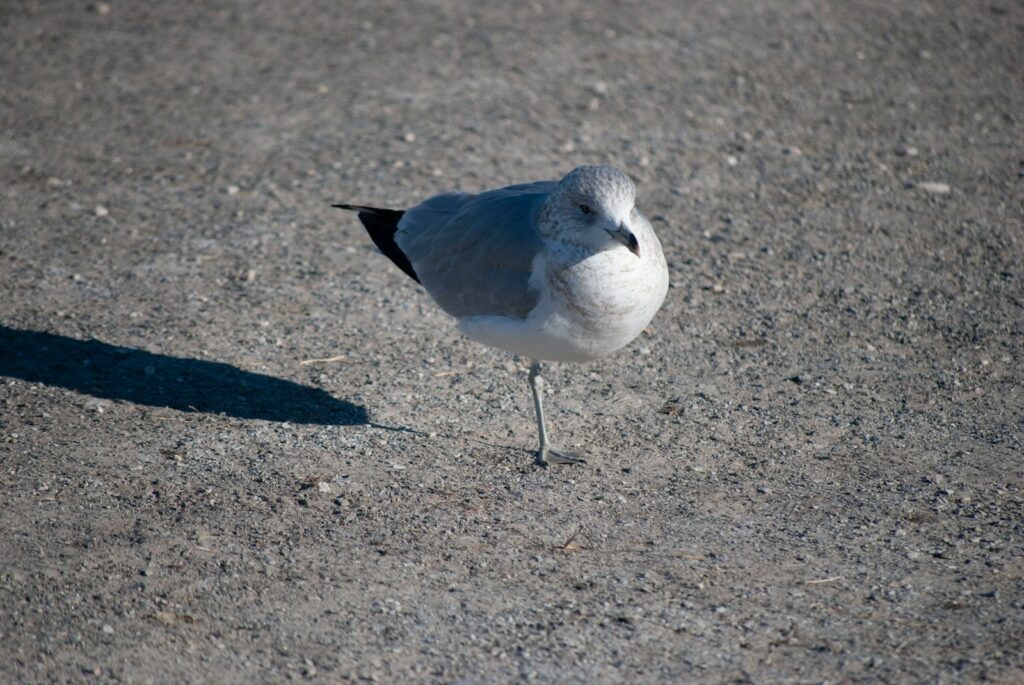
The ability of birds to sleep while balancing on one leg represents a biomechanical marvel that has fascinated scientists for generations. Unlike humans, who must constantly make micro-adjustments to maintain balance, many birds possess specialized anatomical features that lock their joints in place without requiring active muscle contraction. This “stay apparatus” includes a system of tendons and ligaments that automatically engage when the leg is extended in a specific position, creating a passive locking mechanism similar to a ratchet system. Research using force plates and high-speed cameras has revealed that sleeping birds experience remarkably little postural sway compared to awake birds, suggesting their balance mechanism becomes more efficient during rest. The center of mass in many one-leg-standing birds aligns perfectly over the supporting leg, creating a naturally stable position that requires minimal energy to maintain. Some species also possess specialized foot structures with elongated toes that increase the base of support, further enhancing stability during one-legged sleep.
Thermal Imaging Reveals the Benefits
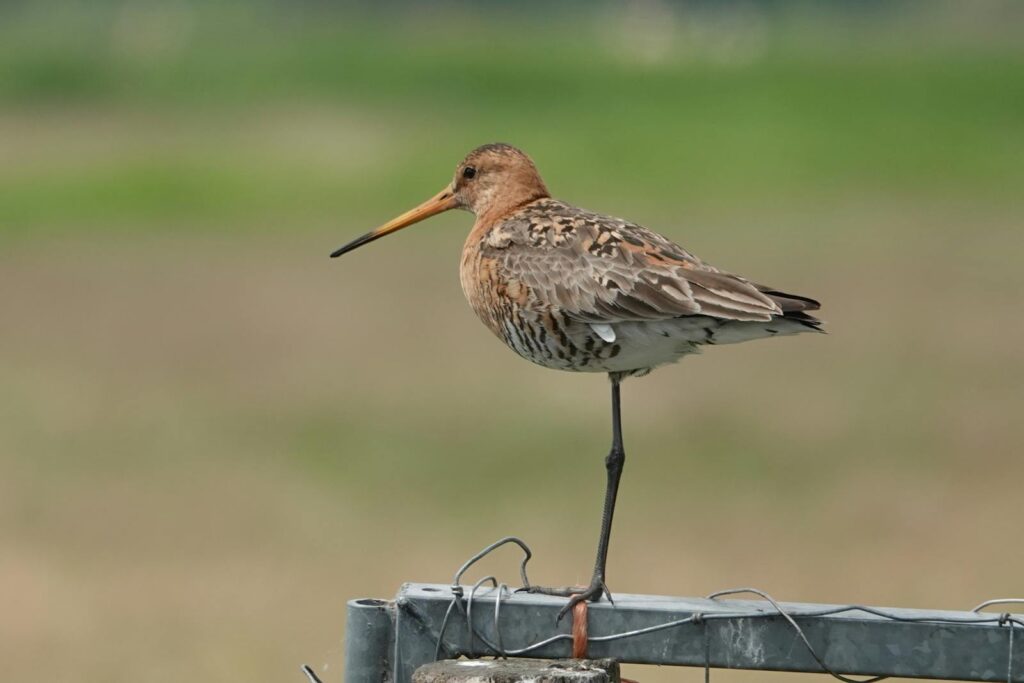
Modern research utilizing thermal imaging technology has provided compelling visual evidence supporting the thermoregulatory benefits of one-legged sleeping in birds. These infrared studies clearly show significantly lower temperatures in exposed legs compared to those tucked against the body, confirming that this behavior effectively reduces heat loss. Scientists have documented temperature differences of up to 30°F between exposed and tucked legs in some species, representing substantial energy savings in cold environments. Thermal imaging has also revealed that birds frequently alternate which leg they stand on, particularly in colder conditions, suggesting they may be responding to temperature sensations in each limb. Studies of flamingos using this technology demonstrated that individuals standing in colder water were more likely to adopt the one-legged posture than those in warmer environments, providing strong evidence for thermoregulation as a primary function. These visualization techniques have transformed our understanding of avian thermoregulation from theoretical models to observable thermal patterns that clearly demonstrate the adaptive value of this unusual sleeping position.
Seasonal Variations in One-Legged Sleeping
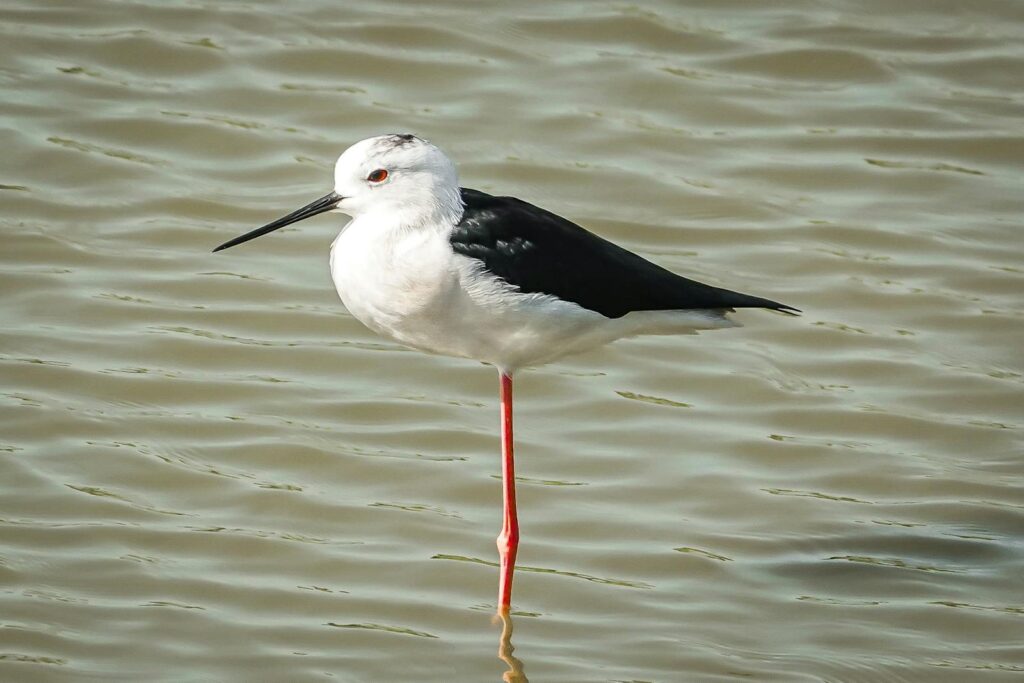
The frequency and duration of one-legged sleeping behavior often varies seasonally across bird species, providing further evidence of its connection to environmental conditions. Long-term observational studies have documented that many birds increase their one-legged standing time during colder months and reduce it during warmer periods, suggesting a direct response to thermal challenges. In species that migrate between significantly different climate zones, researchers have noted variations in one-legged sleeping patterns that correspond to the local temperature conditions rather than fixed behavioral traits. Some birds, particularly those in temperate regions with dramatic seasonal temperature swings, may seldom use the one-legged position during summer months but adopt it as a standard resting posture during winter. Even in tropical species, subtle seasonal variations have been observed, with birds more likely to stand on one leg during nighttime temperature drops or rainy periods when evaporative cooling increases heat loss. These seasonal patterns provide compelling evidence that, while one-legged standing may serve multiple functions, thermoregulation remains a primary driver of this distinctive behavior.
Sleeping with One Eye Open
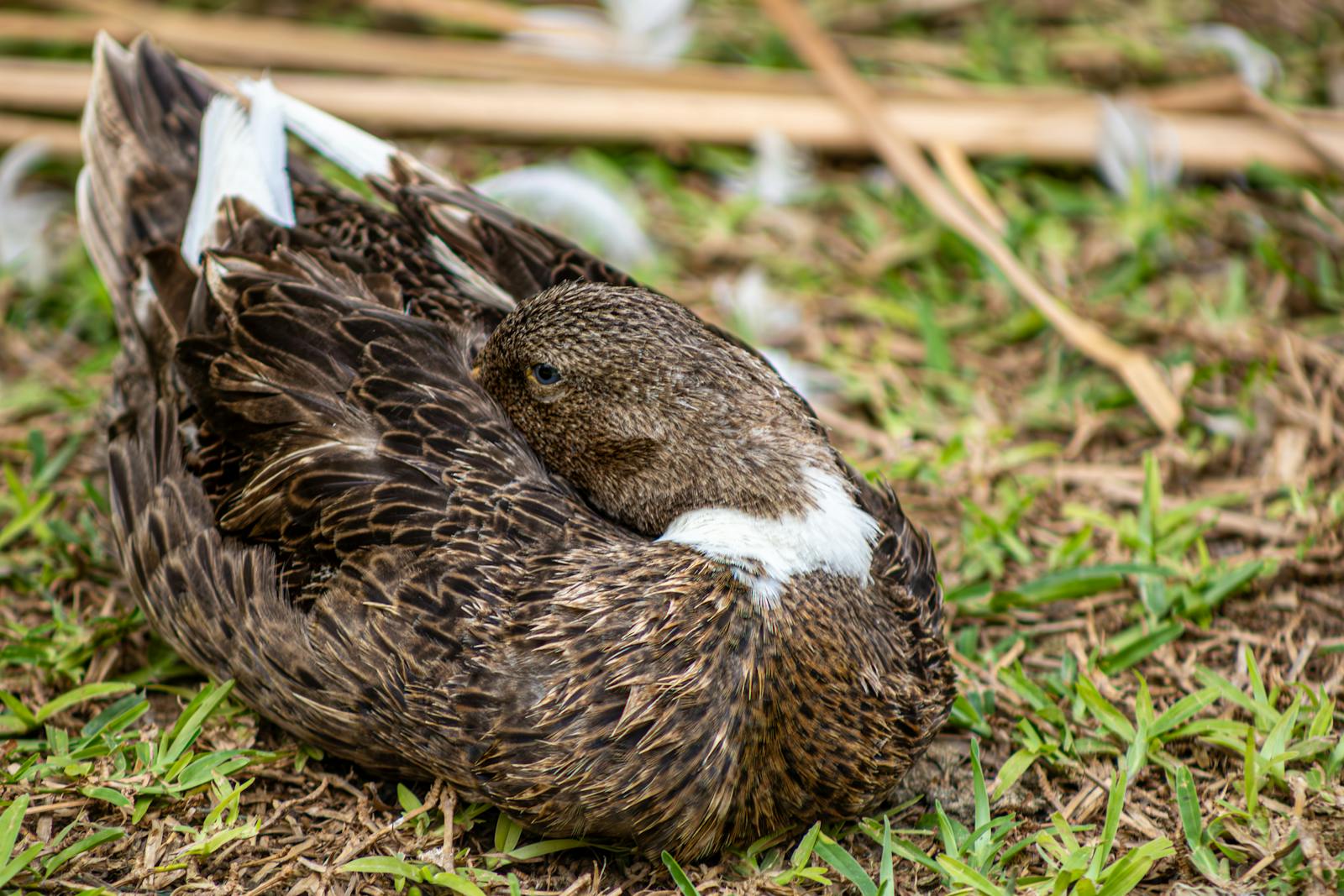
Many birds that sleep standing on one leg employ another fascinating adaptation known as unihemispheric sleep—literally sleeping with one half of their brain at a time while keeping one eye open. This remarkable ability allows birds to remain vigilant against predators even while resting, particularly important for species that sleep in exposed locations. Research has shown that the open eye typically corresponds to the hemisphere of the brain that remains alert, while the closed eye connects to the hemisphere that enters deeper sleep. When combined with one-legged standing, this creates an energy-efficient resting state that still maintains some level of predator awareness. Studies using electroencephalography (EEG) have confirmed that birds can achieve genuine sleep in one brain hemisphere while the other remains in a wakeful state, representing true simultaneous sleeping and waking. This adaptation is particularly valuable for migratory birds that must sleep during long journeys over open water or other areas where landing to rest isn’t possible, allowing them to navigate and rest simultaneously.
Conservation Implications for One-Legged Sleepers
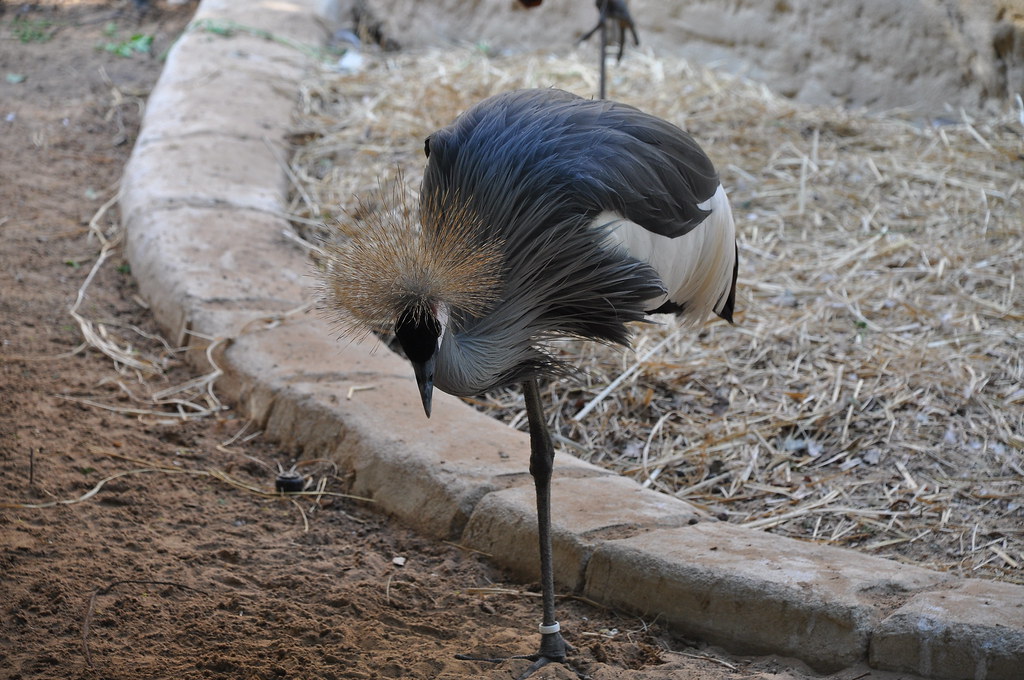
Understanding the importance of one-legged sleeping behavior has significant implications for conservation efforts targeting these bird species. Many of the birds that rely heavily on this thermoregulatory strategy, including flamingos, herons, and storks, depend on specific wetland habitats that are increasingly threatened by human development, pollution, and climate change. Conservation scientists now recognize that protecting not just feeding grounds but also safe, undisturbed roosting areas where birds can comfortably enter their energy-saving one-legged sleep state is critical for population health. Climate change poses a particular threat as rising temperatures alter the thermal conditions that have shaped these evolutionary adaptations, potentially creating mismatches between instinctive behaviors and environmental needs. Additionally, human disturbance in roosting areas can force birds to remain alert on two legs, preventing them from entering their more efficient resting state and creating unnecessary energy expenditure. Effective conservation plans now incorporate knowledge about these specialized resting behaviors, ensuring protected areas provide appropriate conditions for birds to engage in their natural sleep patterns.
Observing One-Legged Sleepers in the Wild
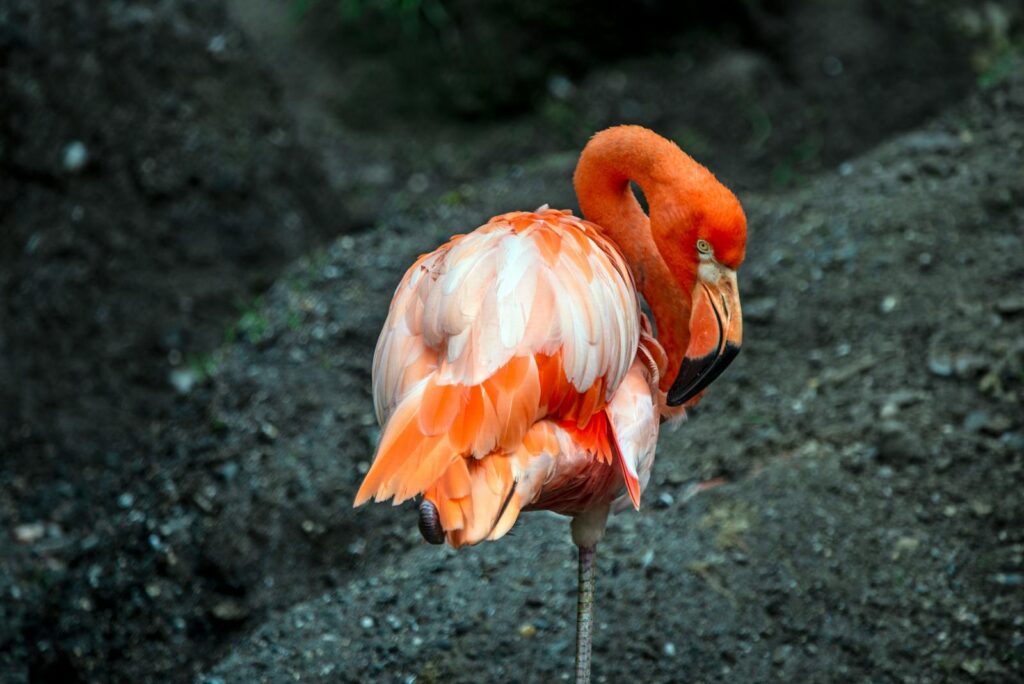
For wildlife enthusiasts and birdwatchers, observing birds sleeping on one leg offers a window into fascinating avian adaptations that highlight the remarkable diversity of survival strategies in the natural world. The best times to witness this behavior are typically during mid-day rest periods or in the early evening as birds settle in for the night, particularly in wetland habitats where many one-legged sleepers congregate. Birding hotspots like Florida’s Everglades, Nebraska’s Platte River during crane migration, and the flamingo lakes of East Africa’s Rift Valley provide spectacular opportunities to see large numbers of birds engaged in this behavior simultaneously. When observing, patience is key—birds may shift between standing on one or two legs depending on their alertness level, with more relaxed individuals more likely to adopt the one-legged posture. Binoculars or spotting scopes allow for observation from a distance that won’t disturb the birds, preserving their natural behaviors and energy-conservation strategies. Photography enthusiasts should note that early morning and late afternoon provide not just the best light but often coincide with periods when many wading birds are adopting their one-legged resting positions.
Conclusion
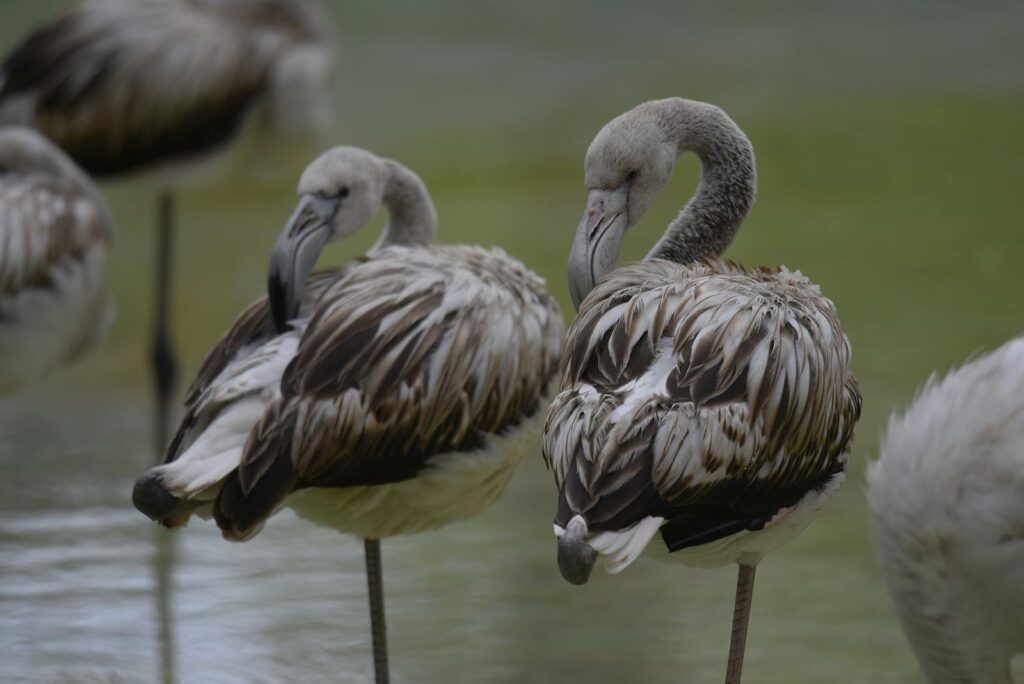
The phenomenon of birds sleeping on one leg represents one of nature’s elegant solutions to the challenges of energy conservation and environmental adaptation. From the iconic flamingo to the hardy Emperor Penguin, these six species demonstrate how a seemingly simple posture can provide significant survival advantages across diverse habitats and conditions. This behavior, evolved over millions of years, reminds us of the remarkable specializations that allow birds to thrive in environments that would otherwise present insurmountable challenges. As we continue to study these adaptations, we gain not just scientific knowledge but a deeper appreciation for the intricate ways in which life has adapted to Earth’s varied environments. Next time you spot a bird balanced perfectly on a single leg, take a moment to appreciate the remarkable biological engineering that makes this unusual sleeping position not just possible, but preferable for so many avian species.
